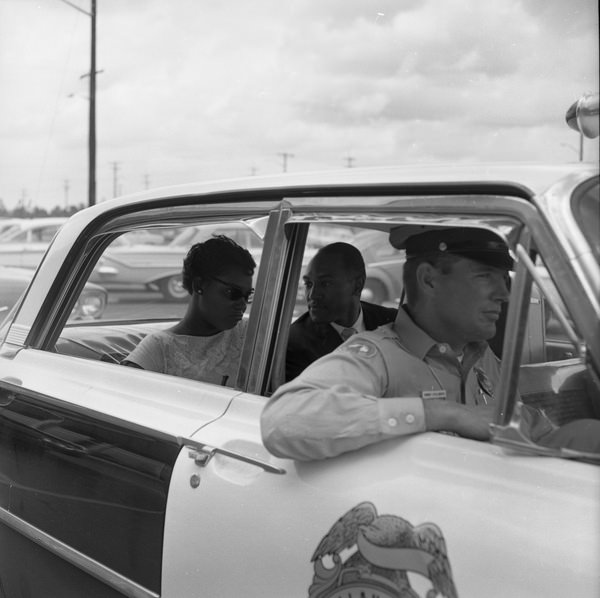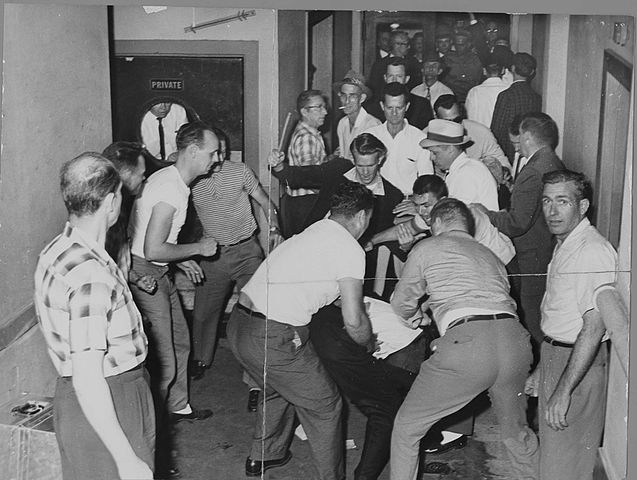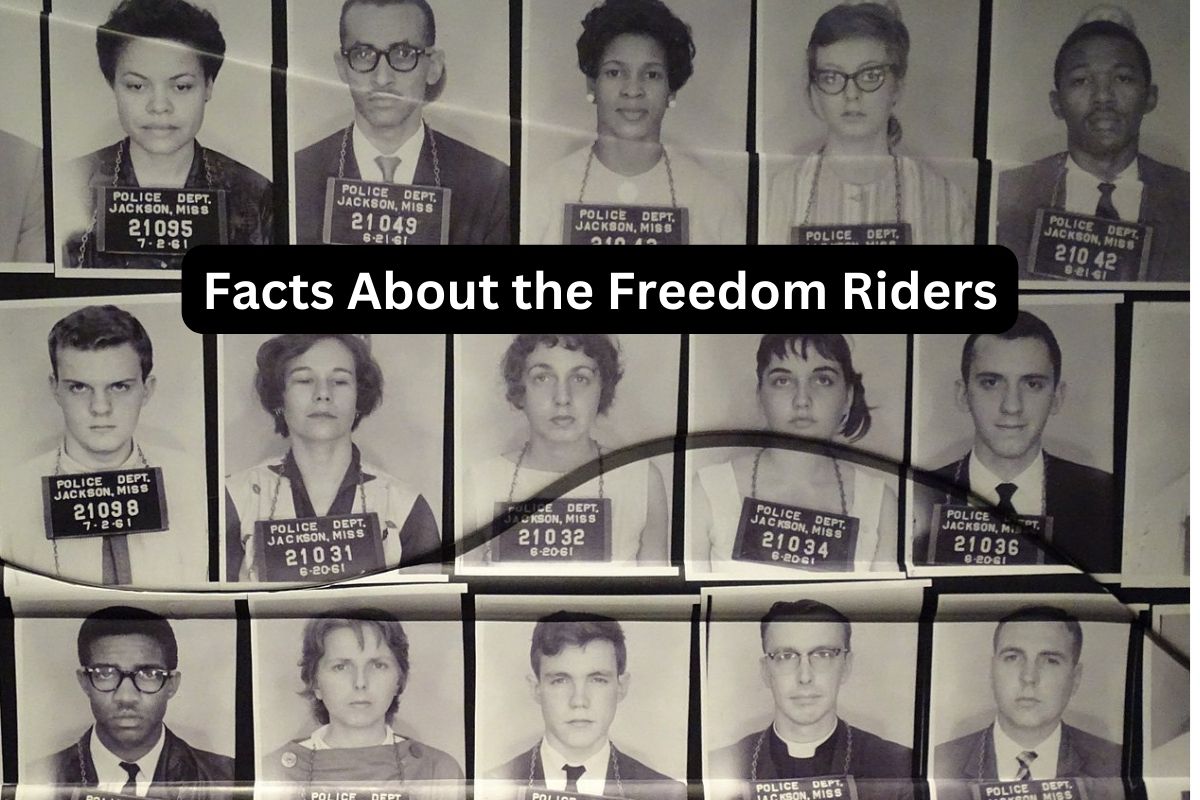The Freedom Riders were a group of civil rights activists who played a pivotal role in the fight against racial segregation in the United States during the early 1960s.
Organized by the Congress of Racial Equality (CORE), these courageous individuals embarked on a series of bus journeys across the South, deliberately violating segregation laws to challenge the Supreme Court’s rulings on desegregation in interstate travel.
The Freedom Riders faced violent opposition and endured physical attacks from white supremacists, highlighting the deep-seated racism that permeated society.
Despite the dangers they faced, their activism garnered national attention, energized the civil rights movement, and helped bring about significant changes in enforcing desegregation laws. Their unwavering commitment to justice and equality left an indelible mark on American history.
The Freedom Riders Facts
1. The Freedom Riders were a group of civil rights activists who challenged segregation during the early 1960s
The Freedom Riders were a group of civil rights activists who sought to combat racial segregation and discrimination in the United States during the early 1960s.
Also Read: Facts About Little Rock Nine
They played a crucial role in the broader civil rights movement by directly challenging the practice of segregation on interstate buses and in bus terminals.

2. The Freedom Rides began in May 1961 and were organized by the Congress of Racial Equality (CORE)
The Freedom Rides began on May 4, 1961, when a small interracial group of Freedom Riders departed from Washington, D.C., on two buses bound for New Orleans.
They were organized by the Congress of Racial Equality (CORE), a prominent civil rights organization committed to nonviolent direct action and equality for all.
3. The main objective of the Freedom Rides was to test and challenge the Supreme Court’s ruling in Boynton v. Virginia (1960)
The primary objective of the Freedom Rides was to test and challenge the enforcement of recent Supreme Court rulings that declared segregation in interstate travel unconstitutional.
Also Read: March on Washington Facts
The case of Boynton v. Virginia in 1960 had affirmed the unconstitutionality of segregated bus terminals, and the Freedom Riders aimed to ensure these rulings were upheld in practice.
By intentionally violating segregation laws, they sought to expose the ongoing systemic racism and draw attention to the need for immediate change.
4. The Freedom Riders consisted of both African American and white activists
The Freedom Riders consisted of a diverse group of individuals, including both African American and white activists. This intentional integration was a powerful statement against the racial segregation prevalent at the time.
By riding together on buses through the racially divided South, the Freedom Riders defied the deeply ingrained norms and laws that enforced segregation.
5. The riders faced extreme hostility and violence from white supremacists
Throughout their journey, the Freedom Riders encountered vehement opposition and violence from white supremacists, segregationists, and local authorities.
They faced intense hostility and danger at various stops along their route. They were subjected to verbal abuse, physical attacks, and threats to their lives.
These attacks often occurred in the presence of law enforcement, highlighting the complicity or indifference of some authorities to the plight of African Americans and civil rights activists.

6. One of the most notorious incidents during the Freedom Rides occurred on May 14, 1961, in Anniston, Alabama
One of the most infamous incidents during the Freedom Rides took place on May 14, 1961, in Anniston, Alabama. A mob of segregationists attacked one of the Freedom Riders’ buses, slashing its tires and firebombing it.
As the bus became engulfed in flames, the passengers, including the Freedom Riders, were brutally assaulted as they attempted to escape. The Anniston attack and other violent encounters received widespread media coverage, exposing the brutal reality of racial hatred and galvanizing public opinion against segregation.
Despite the violence, the Freedom Riders remained committed to their cause, displaying remarkable courage and determination in the face of grave danger.
7. The violence and media coverage surrounding the Freedom Rides brought national attention
The Freedom Rides had a significant impact on raising national awareness and support for the civil rights movement. The violence and brutality faced by the Freedom Riders, captured through photographs and news reports, shocked the American public.
The media coverage brought the issue of racial segregation and discrimination to the forefront of national consciousness, exposing the harsh realities experienced by African Americans in the South.
The images and stories of the Freedom Riders resonated with people across the country and helped mobilize public opinion in favor of civil rights reform.
8. The Freedom Rides played a significant role in pressuring the federal government to enforce desegregation laws
The widespread attention generated by the Freedom Rides put pressure on the federal government to take action. The Kennedy administration, under President John F. Kennedy, faced mounting criticism for its perceived inaction in protecting the civil rights of African Americans.
The Freedom Rides forced the federal government to intervene and enforce desegregation laws more effectively. It also prompted the involvement of the Interstate Commerce Commission, which issued regulations in November 1961 prohibiting racial segregation in interstate bus travel.
9. Many of the Freedom Riders were arrested and jailed for their participation
Many Freedom Riders were arrested and jailed for their participation in the protests. The arrests aimed to discourage and intimidate them, but they remained resolute in their commitment to nonviolent resistance and equality.
The imprisonment of the Freedom Riders further highlighted the lengths to which they were willing to go to fight for civil rights and equality under the law. Their determination in the face of adversity inspired others to join the movement and contributed to the overall strength of the civil rights struggle.
10. The bravery and determination of the Freedom Riders contributed to the momentum of the civil rights movement
The legacy of the Freedom Riders extends beyond their immediate impact on desegregation. Their bravery and sacrifice inspired subsequent protests and demonstrations challenging racial segregation in various forms.
The Freedom Rides served as a catalyst, sparking a new wave of activism and galvanizing the civil rights movement.
Their efforts contributed to the passage of the Civil Rights Act of 1964, which outlawed racial segregation and discrimination in public accommodations, and the Voting Rights Act of 1965, which protected African Americans’ right to vote.
The Freedom Riders remain an iconic symbol of the power of nonviolent resistance and the struggle for racial justice in the United States.
